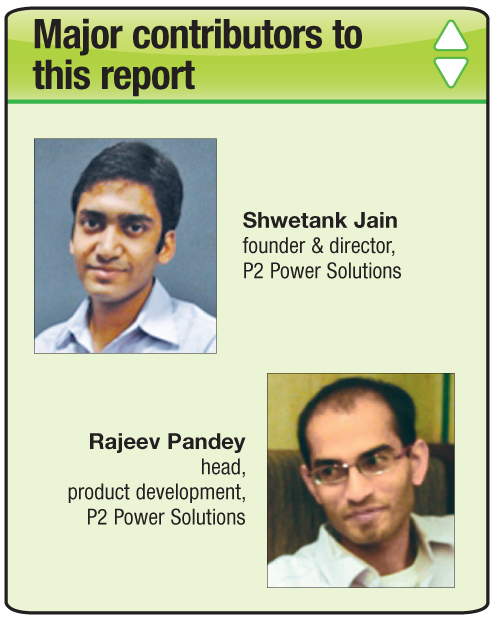“The hardware of iCon is quite similar to an inverter. We use self-made microcontrollers and the best components available in the market like IGBTs from Mitsubishi, Fujitsu or Infineon, and LEM sensors,” says Pandey.
iCon uses P2 Power’s patent-applied software algorithm that is implemented through the two microcontrollers installed in the product. The software in the DSP microcontroller controls the functioning and operation of all the components assembled in the product. It identifies an effective physical layout and modifies the design of the load after observing various parameters, area of malfunction and the root cause of the problem.
“The microcontroller breaks down the current requirement of the load into harmonics, reactive current required to make the power factor unity, unbalanced current and neutral current. For example, if 100A reactive current, 50A unbalanced and 50A harmonics are required, a total of 200A is generated and is distributed to the loads as per the requirement. The software algorithm controls this distribution of current. The output current is controlled by IGBTs, which is also controlled by a microcontroller. We initially faced many problems in trying to stabilise the product and arrive at a perfect tuning between the product’s hardware and software. This resulted in several iterative improvements of the components and the software used to drive these components, thus, helping us make the product very stable and suitable in all electrical environments,” Pandey comments.
Application and cost
 After buying the product the user can connect iCon anywhere in the supply system—to the transformer or to any desired sensitive electronic equipment. The power saved depends on the power factor of the equipment. “For example, if you maintain a high power factor of about 0.8, a minimum saving of 50 per cent is guaranteed. If your power factor is 0.4, you will save at least 75 per cent,” says Pandey.
After buying the product the user can connect iCon anywhere in the supply system—to the transformer or to any desired sensitive electronic equipment. The power saved depends on the power factor of the equipment. “For example, if you maintain a high power factor of about 0.8, a minimum saving of 50 per cent is guaranteed. If your power factor is 0.4, you will save at least 75 per cent,” says Pandey.
Wherever there is a requirement of power, load-balancing harmonics is an important aspect. This product is suitable for any industry that consumes power and faces issues in load-balancing.
“It can be used in industries like cement, steel, paper, printing, hospitals and shopping malls, just to name a few. The government is trying to enforce regulations on the power consumption and the quality of power being maintained by the industries,” Pandey adds.
iCon has been priced significantly lower than similar products. As the product was developed in a university lab, costs on research and IP has been brought down. The product is available in various current ratings including 15A, 35A, 70A, 100A, 140A, 210A, etc. These units are typically priced between Rs 3500 and Rs 4000 (excluding taxes) per ampere. However, these prices are not applicable to the units of rating lower than 70A.
Besides these costs the customer has to pay for the packaging and freight charges. P2 Power’s scope of work covers the installation and commissioning of iCon but the customer has to bear the basic cost of trunking and cabling of the unit, and installation of CTs at their site. All these are nominal costs and the total expenditure on installation never exceeds Rs 10,000. Apart from ensuring regular cleaning of the unit, and a dust- and moisture-free environment, iCon doesn’t require much maintenance. It’s typical life is greater than 40,000 hours.
What’s in store?
P2 Power is planning to develop other variants and ratings of iCon in the near future. The company is working on several new features related to user-interface and user-customisation in the product.
“The design of the system will keep on improving. Other special features based on the study of grid-condition at the client’s sites and feedback from the client itself would guaide the type of improvements to be incorporated in the system,” Pandey concludes.
The author is from EFY Bureau, Bengaluru






